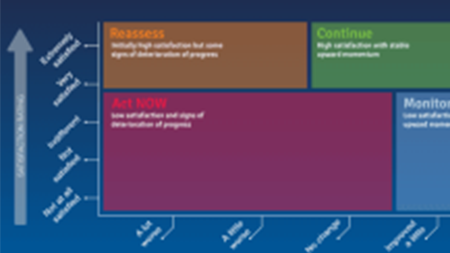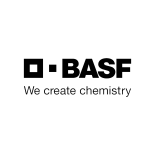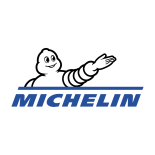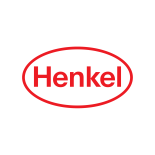The Value Proposition Canvas is a framework which can help ensure that a product or service is positioned around what the customer values and needs.
The Value Proposition Canvas was initially developed by Dr Alexander Osterwalder as a framework to ensure that there is a fit between the product and market. It is a detailed tool for modeling the relationship between two parts of the Osterwalder’s broader Business Model Canvas; customer segments and value propositions.
The Value Proposition Canvas can be used when there is need to refine an existing product or service offering or where a new offering is being developed from scratch.
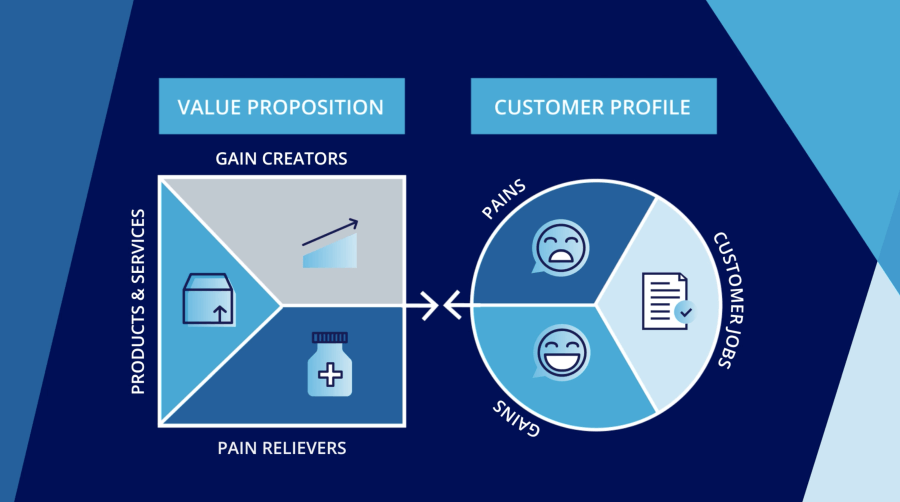
The Value Proposition Canvas is formed around two building blocks – customer profile and a company’s value proposition.
Customer Profile
-
Gains – the benefits which the customer expects and needs, what would delight customers and the things which may increase likelihood of adopting a value proposition.
-
Pains – the negative experiences, emotions and risks that the customer experiences in the process of getting the job done.
-
Customer jobs – the functional, social and emotional tasks customers are trying to perform, problems they are trying to solve and needs they wish to satisfy.
A customer profile should be created for each customer segment, as each segment has distinct ‘jobs to be done’, pains and gains.
Value Map
-
Gain creators – how the product or service creates customer gains and how it offers added value to the customer.
-
Pain relievers – a description of exactly how the product or service alleviates customer pains.
-
Products and services – the products and services which create gain and relieve pain, and which underpin the creation of value for the customer.
Achieving fit between the value proposition canvas and customer profile
After listing gain creators, pain relievers and products and services, each point identified can be ranked from ‘nice to have’ to ‘essential’ in terms of value to the customer. A fit is achieved when the products and services offered as part of the value proposition address the most significant pains and gains from the customer profile.
Identifying the value proposition on paper is only the first stage. It is then necessary to validate what is important to customers and get their feedback on the value proposition. Further market research and insights can then be used to go back and continually refine the proposition.
Going further: Using the value proposition canvas to identify opportunities for differentiation
An additional step is to investigate the extent to which a company has a competitive advantage in those areas to ensure that the value proposition is unique and sufficiently differentiated.
A matrix can be used to plot each aspect of the value proposition with respect to its value to the customer and the competitive advantage the company has in offering that product or service.
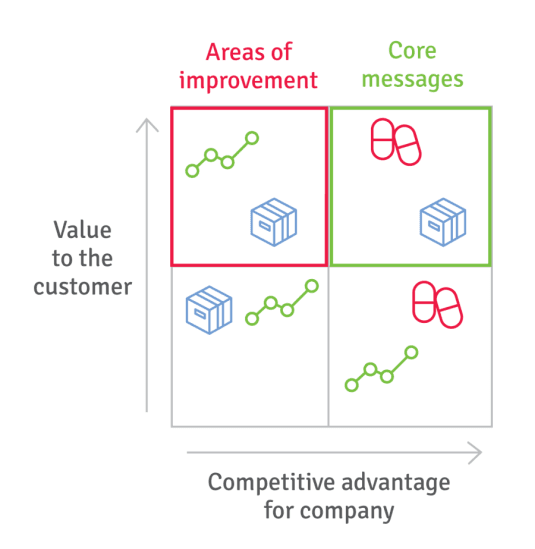
This enables core messages and potential areas of improvement to be identified. Core messages are those that are likely to have wide resonance and should feature prominently in marketing literature. Areas for improvement may include hygiene factors, priorities for product refinement or where market education on the company’s offer is needed.
References
Osterwalder, A., Pigneur, Y., Bernarda, G., Smith, A. (2014) Value Proposition Design: How to Create Products and Services Customers Want, John Wiley & Sons.




